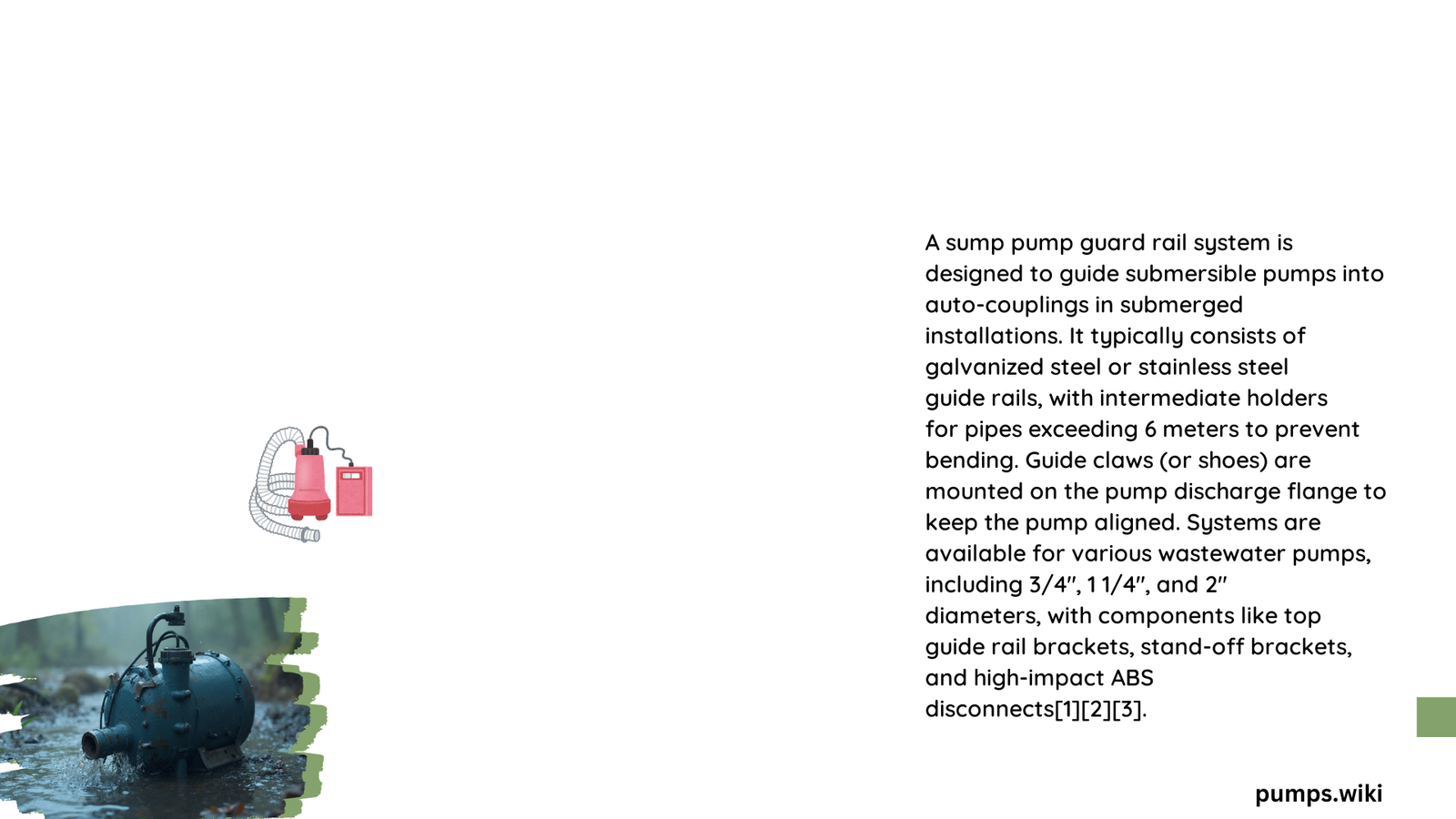Sump pump guard rails are critical infrastructure components designed to provide precise vertical guidance, stability, and safe installation for submersible pumps in wet wells. These specialized rail systems ensure accurate pump positioning, reduce mechanical stress, and facilitate effortless maintenance by enabling smooth vertical movement while preventing lateral displacement during operational cycles.
What Are Sump Pump Guard Rails?
Sump pump guard rails represent a sophisticated mechanical system that supports and guides submersible pumps during installation, operation, and maintenance. These precision-engineered components typically consist of:
- Galvanized or stainless steel guide pipes
- Stationary base elbows
- Movable pump fittings
- Anchoring hardware
Why Do You Need Sump Pump Guard Rails?
Sump pump guard rails serve multiple critical functions:
- Precise Positioning
- Ensures exact pump alignment
- Prevents misalignment during installation
-
Reduces mechanical stress on pump components
-
Operational Efficiency
- Facilitates smooth vertical pump movement
- Enables quick and safe pump removal
-
Minimizes potential damage during maintenance
-
Structural Integrity
- Provides robust support for heavy pumping equipment
- Prevents lateral movement
- Enhances overall system reliability
What Materials Are Commonly Used?

| Material | Durability | Corrosion Resistance | Cost Range |
|---|---|---|---|
| Galvanized Steel | High | Good | $10-$20/linear foot |
| Stainless Steel | Excellent | Excellent | $20-$40/linear foot |
| Cast Iron | Very High | Moderate | $15-$30/unit |
How to Install Sump Pump Guard Rails?
Required Tools and Materials
Essential Tools:
– Wrenches
– Socket set
– Drill
– Level
– Torque wrench
Critical Materials:
– Schedule 40 guide rail pipes
– Stationary elbows
– Movable fittings
– Stainless steel anchors
– Rubber gaskets
Step-by-Step Installation Process
- Site Preparation
- Verify sump diameter
- Check concrete surface
-
Ensure minimum 36″ x 48″ access opening
-
Stationary Elbow Mounting
- Use four anchor bolts
- Level horizontal flange
- Apply grout underneath
-
Allow 30-day concrete curing period
-
Guide Rail Pipe Installation
- Mount 3″ schedule 40 pipes
- Use intermediate holders for lengths exceeding 6 meters
-
Ensure vertical alignment
-
Pump Fitting Connection
- Insert studs into pump volute
- Position movable fitting
- Torque to manufacturer’s specifications (75-85 ft/lbs)
What Safety Considerations Exist?
Critical Safety Features
- Maximum descent speed: 3.2 inches per second
- Load capacity rating
- Impact-resistant materials
- Compliance with industrial safety regulations
Performance Optimization Tips
- Regular inspection of rail components
- Lubricate moving parts
- Check anchor bolt torque annually
- Monitor descent speed during maintenance
Common Challenges and Solutions
| Challenge | Solution |
|---|---|
| Corrosion | Use stainless steel components |
| Misalignment | Precise initial installation |
| Mechanical Wear | Regular maintenance |
Maintenance Recommendations
- Inspect guide rails every 6-12 months
- Check for signs of wear or corrosion
- Verify anchor bolt integrity
- Test smooth vertical movement
Cost Considerations
Typical sump pump guard rail systems range from $500-$2,500, depending on:
– Pump size
– Material quality
– Complexity of installation
Conclusion
Sump pump guard rails represent a critical investment in reliable, efficient pump infrastructure. Proper selection, installation, and maintenance ensure long-term operational excellence.
